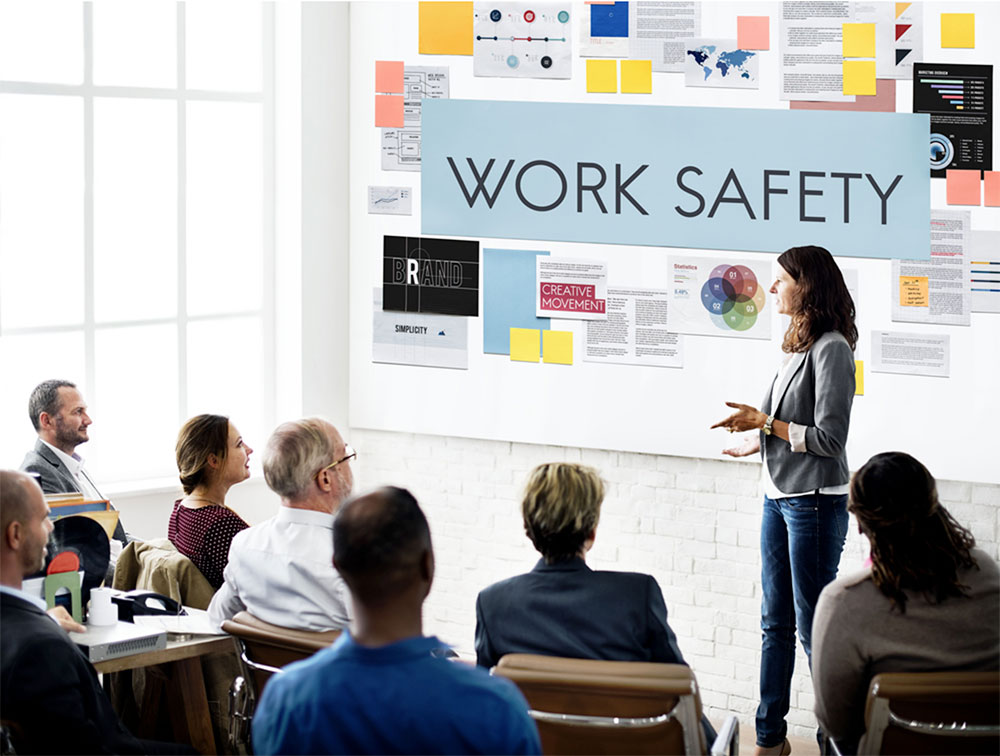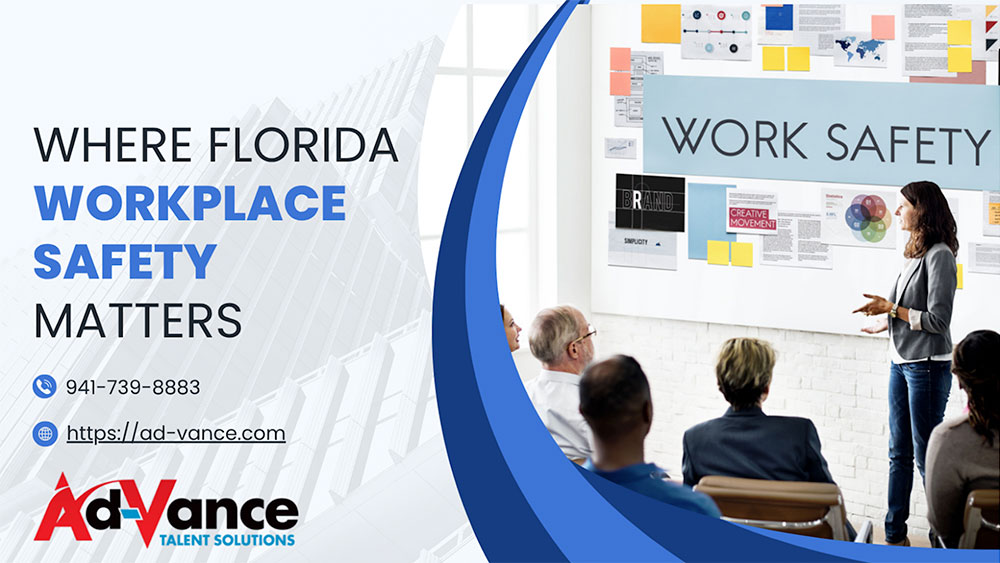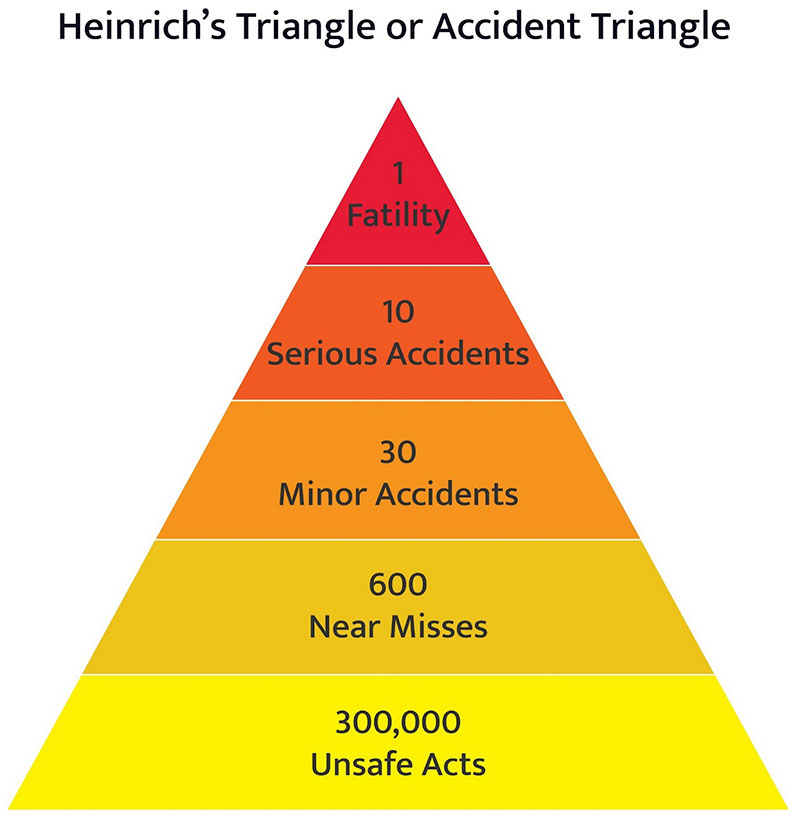
Several years ago, I stepped onto the floor of a distribution center amid the controlled chaos of pallets, forklifts, and seasonal temp workers. A newly hired team member leaned over to me, voice tinged with nervousness, and admitted, “I hope they train us on the hazards too—so we don’t just hit the ground running, but do it safely.” That moment stuck because it illuminated a universal truth: in any workplace, especially fast-paced or high-risk environments, safety can’t be treated as an afterthought.
At Ad‑Vance Talent Solutions, we believe that workplace safety is an essential code of care—a non-negotiable framework that protects lives, ensures engagement, and fosters productivity. This guide aims to be your definitive resource. Designed for HR leaders, safety managers, business owners, and organizational teams, it combines narrative, research, and refined strategies to help you build and sustain a safety-first culture.
Every number tells a story. In 1970, roughly 14,000 workers died in U.S. workplaces—meaning 38 deaths per day. Thanks to OSHA’s formation and evolving safety protocols, that figure has fallen to around 5,200 deaths per year, roughly 14 per day. Yet even a single preventable death demands action—it’s a personal tragedy and a professional crisis rolled into one.
Behind those numbers are families disrupted, careers derailed, and trust eroded. Injuries often mean time off, long recovery, and diminished quality of life. According to the 2025 Liberty Mutual Workplace Safety Index, U.S. employers absorb nearly $59 billion annually in direct costs for serious injuries—over $1 billion each week. Indirect costs—lost productivity, training replacements, trust rebuilding—multiplied, take a much larger toll.
When a workplace becomes unsafe, morale falls and turnover ticks up. Employees leave for companies that demonstrate genuine concern for their wellbeing. Clients and prospects also pay attention—those with strong safety programs project stability and responsibility.
Businesses with robust safety frameworks enjoy quantifiable returns. A safer workplace translates directly into less downtime, fewer medical expenses, and lower insurance premiums. Even better—it supports a winning brand. Prospective employees and customers want to know: does this company genuinely care about its people?
Investing in safety goes beyond tactical cost-savings. It builds organizational resilience. Teams that feel valued, protected, and empowered to speak up perform better. Innovation comes not just from ideas, but environments that encourage exploration—without risking personal welfare.
Regulatory standards are the undeniable minimums. At the federal level, the Occupational Safety and Health Act (OSH Act) requires employers to create hazard-free workplaces. But many states—especially those like Florida, California, and Minnesota—operate OSHA-approved programs with stricter criteria. Industries—construction, manufacturing, biotechnology—often feature heightened requirements specific to materials, equipment, or processes.
Compliance isn’t simply checking boxes—it demands a proactive and ongoing commitment. From documenting hazard evaluations to maintaining logs, conducting inspections, and responding to citations, compliance is a flying tapestry of audit, analysis, and adaptation. A well-organized internal compliance system, integrated with HR workflows and on-the-floor supervisors, turns regulatory obligations into proactive safety investments.
A safe workspace starts with how it’s built and maintained. Is storage secure? Is lighting adequate? Are pathways marked and obstructions flagged? Safety hinges on visual cues, structural soundness, and alignment between intention and practice.
It’s not enough to issue hard hats—employees must understand why they wear them. PPE must be consistently selected to meet specified risk thresholds. Wide-ranging hazards—from chemical spills to moving machinery—require matching protections like gloves, eye shields, and respirators. Environmental hazards such as strobe lights or hazardous chemical presence often call for engineering modifications, environmental monitoring, and periodic re-evaluation.
Safety training matters—but only when seen as an ongoing conversation. Nearly half of workers globally report never receiving official safety training, while up to 90% of serious workplace incidents stem from human error or ignorance. Investing in clear, continuous training programs is therefore essential.
At the center of our approach is a structured training crescendo: onboarding, supplemented by interactive refresher modules, role-based simulations, and scenario-based workshops. Safety leaders must talk frequently—including at daily huddles—embedding safety into every shift. Safety signage should be visible, legible, and consistently reinforced. A transparent channel for worker input—anonymous reporting, safety suggestion boxes, digital platforms—empowers employees to voice concerns without fear.
Passed on December 29, 1970, the OSH Act created OSHA to enforce health and safety standards. Since then, workplace fatalities have declined by 60% and illnesses/injuries by 40% 5. OSHA focuses on a hierarchy of controls—from removing hazards to educational safeguards.
Still, compliance involves much more than paperwork. Documentation protocols include logbooks (OSHA 300), hazard communication sheets, training records, and injury reports. And because some sectors aren’t fully under federal OSHA (e.g., mining, maritime), complementary systems—MSHA, PHMSA—extend coverage. Staying current involves harnessing internal audits, external expertise, dedicated compliance staff, and precise data tracking.
Safety succeeds when responsibility is shared. Employers must create and maintain hazard-free environments, supply PPE, train effectively, and hold everyone to the same standard.
Supervisors act as gatekeepers—fixing hazards, enforcing protocols, and carrying worker feedback upward.
Workers, too, share the journey. They have a duty to follow safe procedures, conduct equipment checks before use, and report any risks or near misses. Only a truly collaborative environment delivers sustainable safety outcomes.

Lower incident rates mean fewer compensation claims and lower insurance premiums. The top 10 causes of nonfatal workplace injuries in 2025 cost U.S. employers $5.8 billion to over $10 billion per category. By reducing risks proactively, businesses generate meaningful savings and can allocate these dollars to growth, not remediation.
Safer operations mean predictable results. Injuries lead to lost time—but so do unsafe equipment and confusion. Clear processes and confident personnel reduce disruptions.
Employees respect companies that invest in their safety. This investment yields engagement, innovation, retention, and reduced training costs associated with staff turnover.
A proven record in safety helps companies win contracts in sensitive sectors—government, healthcare, defense—where risk control is a contractual imperative. Organizations prioritizing safety also report better public perception and increased appeal among top-tier job seekers.
The first step toward prevention is spotting risks early. Walkthroughs, safety audits, and JSA (job safety analysis) templates help identify everyday issues. A strong reporting system—anonymous hotlines, digital portals, or one-on-one safety feedback loops—makes it easy to highlight concerns.
Cleanliness isn't cosmetic—it’s a critical defense. Inspections should check for spills, electrical hazards, and trip zones. From paper carts to pallets, clutter slows presses and invites accidents. Most serious injury incident types—slips, trips, falls—can be prevented by ongoing housekeeping. Liberty Mutual estimated slip and fall incidents cost $10.5 billion in 2025.
Delivering PPE alone isn’t enough. The PPE must be the appropriate type, correctly sized, and accompanied by documented fit checks. Safety teams must follow up on actual usage and address problems like fit or comfort—nearly half of all rejected PPE is due to discomfort or style mismatches.
Ergonomics matter, whether in a warehouse or an office. Lifting, postural awareness, workstation layout—all impact health and productivity. Repetitive strain injuries cost U.S. employers $13.7 billion annually. Providing training, adjustable furniture, lift-assist tools, and rotation schedules reduces this burden.
Fire and crisis safety go beyond signage. Teams need regularly drilled procedures—annual evacuation, bipolar fire extinguisher training, CPR certification. You must have emergency response plan visibility. That level of preparation helps everyone feel in control when seconds matter.
Training loses power if it's stale or frequently delivered in lecture form. Use scenario-based exercises, gamified learning, on-site drills, and team competitions (e.g., “Find That Hazard”). Interactive approaches reinforce a safety mindset effectively.
Reward safe behavior. Launch a “safety shout-out” program. Post achievements. From “Safe Job of the Week” to “Safety Star of the Quarter,” visibility matters. Celebrate rising suggestions and messages that help avoid accidents.
Leadership decisions reflect values. When company leaders show up at safety briefings, invest in audits, and bow to compliance first, they set a tone that’s impossible to ignore. Safety becomes a shared expectation, not an optional add-on.
Safety experts can come from any level—frontline workers often spot broken railings, frayed cords, or missing guards. Create “safety ambassador” roles and decision-making latitude so workers can drive improvements. Engage employees early in audits or policy design.
Temporary staff experience injury rates up to twice those of permanent employees—often because they skip orientation or don’t know the system. At Ad‑Vance, we promise the same safety training, documentation, and follow-up for every placement—guaranteeing a consistent experience across workforces.

Crafting a real-world safety program takes intentional moves:
The goal: measurable safety performance, evidenced by reduced incidents, shorter injury leaves, higher training completion, and improved morale.
Each hazard category demands a mix of methods—engineering, administrative, PPE, and monitoring.
Safety KPIs are essential to sustain momentum. Monitor:
Push beyond data—use sentiment analysis and early warning signals to catch problems early.
We operate from a core belief: your people are our people. That philosophy drives our unwavering commitment to workplace safety—not as a checkbox, but as a shared responsibility and promise of care. From day one, every individual we place, whether for a long-term assignment or peak-season support, receives comprehensive safety onboarding. We ensure that no one enters your workplace unprepared, uninformed, or unprotected.
Our training isn’t generic. We customize every module to match your specific operational environment, job demands, and industry risks. Whether it’s handling equipment, managing chemicals, or navigating customer interactions, the training reflects the realities of your workplace—so employees are aware of potential hazards and confident in how to manage them.
Safety isn’t static, and neither are we. That’s why we prioritize consistent communication and proactive engagement. Our team conducts regular check-ins with both employees and supervisors to reinforce protocols, address concerns, and track compliance. This ongoing dialogue allows us to identify risks early and adapt quickly.
We believe in the power of recognition. Our incentive-driven safety programs reward excellence through structured initiatives—like milestone awards, peer-nominated acknowledgments, and performance-based metrics tied to key safety indicators. These efforts don’t just reduce incidents; they reinforce a culture where safe behavior is valued and celebrated.
When the unexpected happens, we’re there—immediately. Our 24/7 rapid-response support ensures you have access to real-time assistance for incident management, OSHA reporting guidance, and supplementary training, should protocols need to shift in response to an event. With Ad‑Vance, you gain not just a staffing partner, but a safety ally, fully invested in the health and performance of your workforce.
Our ultimate mission? Empower both businesses and workers to thrive in a workplace that’s as safe as it is successful.
Do temporary and contract employees receive the same safety training as full‑time staff?
Yes. At Ad‑Vance, every person placed—tool-and-die artisan, call center temp, or forklift operator—completes the same orientation, site-based hazard walkthrough, and follow-up check-ins. We don’t give temporary passes.
What should I do if I spot a new hazard?
Report it immediately. You can use our hotline, safety app, or speak to a supervisor in person. We investigate every report and follow up—keeping you informed on corrections.
How often should safety training happen?
At minimum, annual formal refresher training should occur. But for active environments, monthly toolbox talks, quarterly hands-on drills, and ad-hoc alerts after any change in layout, process, or equipment are best practice.
Safety isn't parked—it’s progressive. But when it’s integrated into every procedure, briefing, and conversation, it transforms a workplace. Productivity rises, people feel protected, and partnerships deepen.
At Ad‑Vance Talent Solutions, we don’t wait for incidents to remind us why safety matters—we proactively design it into everything we do. We’re ready to help you create robust safety systems, tailored training programs, and organizational cultures where everyone steps into work with confidence and no fear.
If you’re ready to elevate your workplace safety and reduce risk, while strengthening your people-first brand, contact Ad‑Vance Talent Solutions today. Together, we’ll build a work environment where people and performance flourish—safely.
